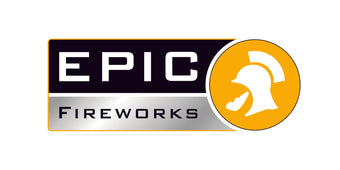
A BRIEF HISTORY OF FIREWORKS
• Between 600 and 900 AD – fireworks were invented by Chinese alchemists who began packing small lengths of the bamboo tube with this newly discovered ‘powder’ which then produced a loud blast when lit.
• Paper tubes replaced the lengths of bamboo by the end of the 10th century and they were using their creations as ‘bombs’ which were more like an incendiary device attached to an arrow – coining the name ‘fire arrows’.
• By the 13th century, gunpowder samples were being transported across Europe and the Arabic states. One of the earliest to extoll the virtues of the earliest fireworks was Roger Bacon (1214 – 1292) who was a Franciscan friar and scholar who wrote in two of his opus that he and his friend (William Roebuck) had witnessed gunpowder demonstrations first hand. Bacon went on to experiment with different mixtures of saltpetre/charcoal and sulphur. The ideal combination was established but as Bacon determined that this ‘discovery’ could be used to instigate war, he wrote the formulae in code which was not deciphered for a couple of centuries. Black powder today still runs as 75% potassium nitrate, 15% charcoal and 10% sulphur.
• Marco Polo has been credited with bringing fireworks to England but in fact, he didn’t come back with them until the latter part of the 13th century by which time Roger Bacon had already written about fireworks years beforehand but he did popularise them across Europe and most certainly passed them onto the Italians who began adding colour.
• By the early 14th century, fireworks had become a source of fascination and a love affair with pyrotechnics became a way of life for numerous Italian families, some of which continue to this day.
• Early records show that medieval jesters used to entertain the Royal Houses of Europe with milder forms of pyro.
• In 1486, upon the wedding of King Henry VII, a fireworks display entertained the rich and powerful friends and relatives of both his and his wife’s (Elizabeth of York). Fireworks at this juncture were very much a political and romantic apparatus, used to great effect in the wedding celebrations.
• 1507 – James IV of Scotland brought the first fireworks to Scotland – indeed they were launched from the King's Stables Road, at the side of Edinburgh Castle, the site of the annual display in Scotland for Hogmanay annually and the next recording was of the arrival of Queen Madeline De Valois who was the future queen of James V.
• Following the death of Henry VII, the crown was meant to have passed to his son; Arthur, but he had died suddenly, passing the succession onto his younger son; Henry VIII. There was little mention of fireworks during his reign, but records do show that fireworks were used during the celebrations of his wedding to Anne Boleyn but little information other than that.
• Years passed and the crown passed from Henry VII to his son Edward VI (son of Henry and Lady Jane Seymor) but as a very sickly child, he died within 6 years passing the crown onto his half-sister Mary I who reigned by terrorising Protestants of the time (see Marian Persecutions) and then to the daughter of Henry VIII and Anne Boleyn; Elizabeth I.
• Elizabeth I was a pyro nut! Indeed, she was so captivated by fireworks that her suitor of many years, Robert Dudley, Earl of Leicester, in his last-ditch attempt to win her hand in marriage in 1575 by created a lavish display in her honour. The immense display was said to be loud enough to be heard 20 miles away. Bearing in mind that the hapless Dudley had in fact overshot one of the cannon type fireworks which resulted in a number of houses been destroyed and the death of one of its residents. The accounting records of the time show that Elizabeth paid £25 in compensation for the damage and the death of one of her subjects which today would have been worth around £7000.00
• Elizabeth even employed the first recorded ‘Firemaster of England’ to her staff. There are few historical records in the interim period but having a Fire Master of her staff would surely have indicated that they were kept busy.
• The first 4th July celebrations in the USA were celebrated with fireworks but they were all one colour – orange. Not very inspirational but this was the start of a quest to add colours to fireworks.
• Fast forward to the early 19th century and the Italians were busily adding salts and metals to the mixture to create colours and effects and continue to push the creativity to this day.
So, there you have a brief history of fireworks which continue to captivate young and old alike and we sincerely hope will continue to do so for years to come.
